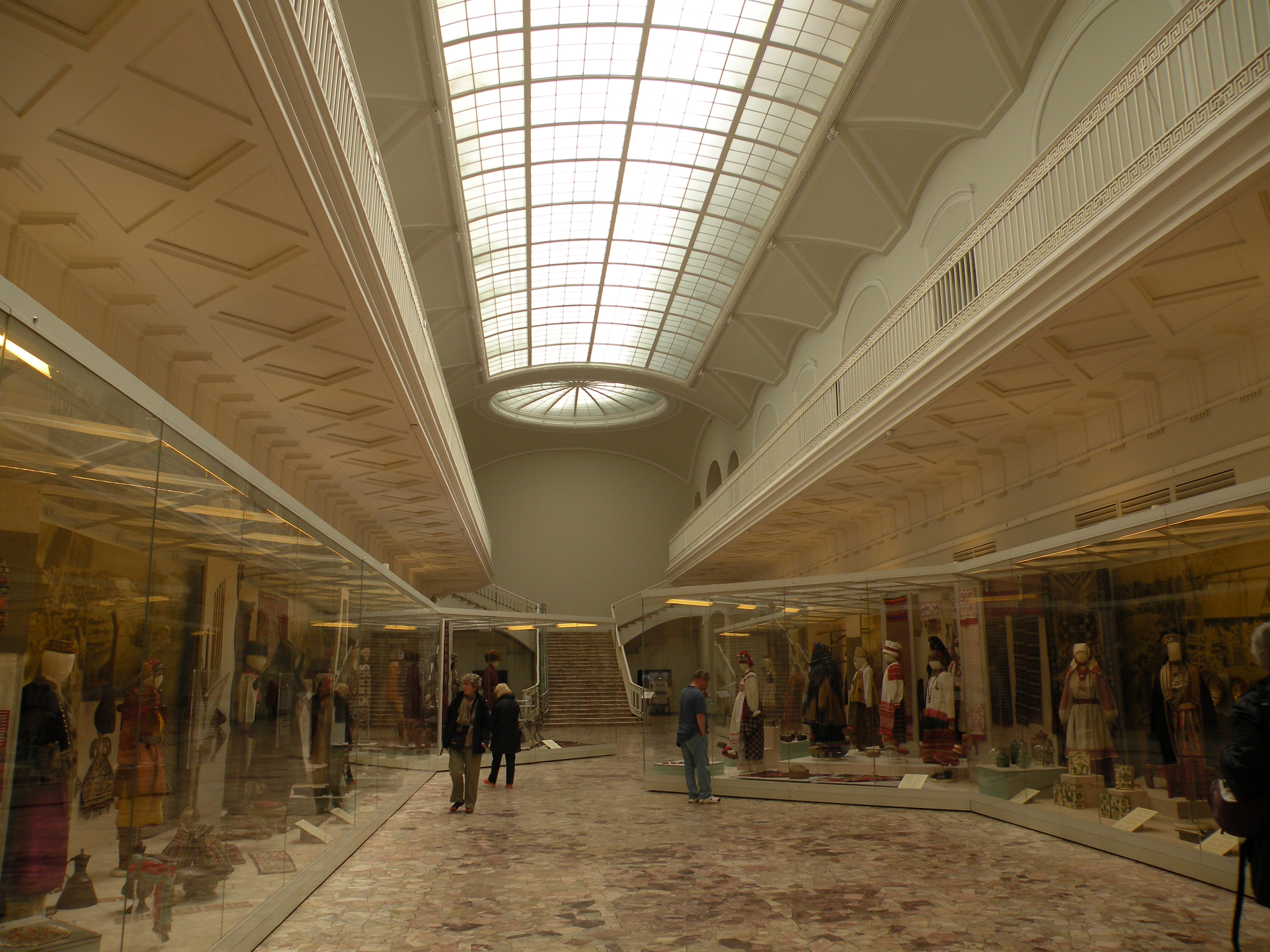Russian Museum Of Ethnography on:
[Wikipedia]
[Google]
[Amazon]

 The Russian Museum of Ethnography (Российский этнографический музей) is a
The Russian Museum of Ethnography (Российский этнографический музей) is a
/ref> The collection was not officially opened to the general public until 1923 and was not detached from the Russian Museum until 1934. When the

museum
A museum ( ; plural museums or, rarely, musea) is a building or institution that cares for and displays a collection of artifacts and other objects of artistic, cultural, historical, or scientific importance. Many public museums make these ...
in St. Petersburg
Saint Petersburg ( rus, links=no, Санкт-Петербург, a=Ru-Sankt Peterburg Leningrad Petrograd Piter.ogg, r=Sankt-Peterburg, p=ˈsankt pʲɪtʲɪrˈburk), formerly known as Petrograd (1914–1924) and later Leningrad (1924–1991), i ...
that houses a collection of about 500,000 items relating to the ethnography
Ethnography (from Greek ''ethnos'' "folk, people, nation" and ''grapho'' "I write") is a branch of anthropology and the systematic study of individual cultures. Ethnography explores cultural phenomena from the point of view of the subject o ...
, or cultural anthropology
Cultural anthropology is a branch of anthropology focused on the study of cultural variation among humans. It is in contrast to social anthropology, which perceives cultural variation as a subset of a posited anthropological constant. The portma ...
, of peoples of the former Russian Empire
The Russian Empire was an empire and the final period of the Russian monarchy from 1721 to 1917, ruling across large parts of Eurasia. It succeeded the Tsardom of Russia following the Treaty of Nystad, which ended the Great Northern War. ...
and the Soviet Union
The Soviet Union,. officially the Union of Soviet Socialist Republics. (USSR),. was a transcontinental country that spanned much of Eurasia from 1922 to 1991. A flagship communist state, it was nominally a federal union of fifteen national ...
.
The museum was set up in 1902 as the ethnographic department of the Russian Museum
The State Russian Museum (russian: Государственный Русский музей), formerly the Russian Museum of His Imperial Majesty Alexander III (russian: Русский Музей Императора Александра III), on ...
. It is housed in a purpose-built Neoclassical building erected between 1902 and 1913 to Vasily Svinyin's design in the proximity of the Mikhailovsky Palace
The Mikhailovsky Palace (russian: Михайловский дворец, tr=Mikhailovskiy dvorets) is a grand ducal palace in Saint Petersburg, Russia. It is located on Arts Square and is an example of Empire style neoclassicism. The palace cu ...
(which accommodates the art collection of the Russian Museum). It occupies the place of the eastern service wing, the stables and the laundry of the palace.
The museum's first exhibits were the gifts received by the Russian Tsars from peoples of Imperial Russia. These were supplemented by regular expeditions to various parts of the Russian Empire which began in 1901. Further exhibits were purchased by Nicholas II of Russia
Nicholas II or Nikolai II Alexandrovich Romanov; spelled in pre-revolutionary script. ( 186817 July 1918), known in the Russian Orthodox Church as Saint Nicholas the Passion-Bearer,. was the last Emperor of Russia, King of Congress Pola ...
and other members of his family (as state financing was not enough to purchase new exhibits). A collection of Buddhist
Buddhism ( , ), also known as Buddha Dharma and Dharmavinaya (), is an Indian religion or philosophical tradition based on teachings attributed to the Buddha. It originated in northern India as a -movement in the 5th century BCE, and ...
religious objects was acquired for the museum by Prince Esper Ukhtomsky
Prince Esper Esperovich Ukhtomsky, Эспер Эсперович Ухтомский ( – 26 November 1921) was a poet, publisher and Orientalism, Oriental enthusiast in late Tsarist Russia. He was a close confidant of Nicholas II of Russia, Tsa ...
. Prince Tenishev, a wealthy industrialist, donated to the museum the archives of his private ethnographic bureau that had been documenting the life of Russian peasants since the 19th century.The Encyclopaedia of St. Petersburg/ref> The collection was not officially opened to the general public until 1923 and was not detached from the Russian Museum until 1934. When the
Museum of the Peoples of the USSR
A museum ( ; plural museums or, rarely, musea) is a building or institution that cares for and displays a collection of artifacts and other objects of artistic, cultural, historical, or scientific importance. Many public museums make thes ...
in Moscow
Moscow ( , US chiefly ; rus, links=no, Москва, r=Moskva, p=mɐskˈva, a=Москва.ogg) is the capital and largest city of Russia. The city stands on the Moskva River in Central Russia, with a population estimated at 13.0 million ...
(successor to the Dashkov Museum
The Rumyantsev Museum evolved from the personal library and historical collection of Count Nikolay Rumyantsev (1754–1826). Its origin was in St. Petersburg in the Rumyantsev house or mansion, building number 44 on the English Embankment overl ...
) was shut down in 1948, its collections were transferred to the Ethnographic Museum in Leningrad. This museum should not be confused with the much older Museum of Anthropology and Ethnography, popularly known as the Kunstkamera
The Kunstkamera (russian: Кунсткамера) or Kunstkammer (German for "Culture Room" (literally) or "Art Chamber", typically used for a " cabinet of curiosities") is a public museum located on the Universitetskaya Embankment in Saint Pet ...
.
References
External links
* * {{Authority control Ethnographic museums in Saint Petersburg Museums established in 1902 Neoclassical architecture in Russia Russian Museum Cultural heritage monuments of federal significance in Saint Petersburg